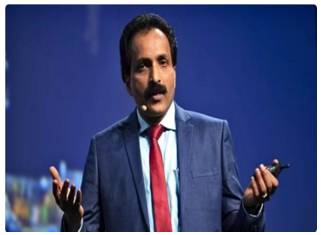
Bhopal The landing demonstration of the Reusable Launch Vehicle-Technology Demonstrator (RLV-TD), one of the most challenging endeavours of the Indian Space Research Organisation (Isro) towards developing essential technologies for a fully reusable launch vehicle to enable low-cost access to space, is scheduled for Saturday, chairman S Somnath told HT in an interview, adding that several major missions are lined up for 2023 The landing demonstration of the Reusable Launch Vehicle-Technology Demonstrator (RLV-TD), one of the most challenging endeavours of the Indian Space Research Organisation (Isro) towards developing essential technologies for a fully reusable launch vehicle to enable low-cost access to space, is scheduled for Saturday, chairman S Somnath told HT in an interview, adding that several major missions are lined up for 2023. Edited excerpts:
Apart from RLV-TD, what are the other important missions lined up for 2023 and what are the dates for these?
RLV's landing demonstration is scheduled for this Saturday, if everything goes well. Then we have the Small Satellite Launch Vehicle's (SSLV) second development flight scheduled for the second week of February. It is going to be between February 1 0 and February 1 5, based on the information we get from the government. One Web India's launch of the next set of 36 satellites is also scheduled for the first week of March.
Another important mission planned for this year is the Aditya-L1 mission (a coronagraphy spacecraft to study solar atmosphere), which is likely to be scheduled around April-May. By February 1, we will also get the radar payload of the Nasa-lsro Synthetic Aperture Radar (NISAR) mission from US. We will be conducting a few tests after that and the launch can be expected around September.
You have been working on methane-powered rocket engines. What is the progress in that?
Methane is identified as a potential future fuel. A big advantage of using methane as a fuel is that it is highly efficient and doesn't produce soot. Over the last few years, a lot of work has been happening around methane engines. We have also started. We tested a 120-tonne methane engine and have completed the design of a 100-tonne thrust methane engine. This will typically take four years of development time; and we are seeking funds from the government to scale up.
How do you assess Isro's performance in 2022 and what are the plans for 2023?
We had planned certain milestones for 2022; we achieved some and some we didn't. I don't think we did enough. I am not too enthused with what we achieved in 2022. The plans were bigger. For instance, the SSLV launch was not successful. It was a narrow miss but it was a personal disappointment for me. We are working hard to make the second launch successful this year. There were some misses, but this is part of long-term missions. 2022 was good but 2023 should be better.
There was a lot of speculation around the satellite images of Joshimath released by Isro. Why were they taken down?
We are doing what is needed, and there was no problem with Isro input. The warning was that we should not give such information to the public before it is screened because this can create unnecessary panic, which can create a problem in any distress situation. We are continuing to give our data and analysis to the governments and the National Disaster Management Authority (NDMA). There is no restriction on data-sharing. It should not be misunderstood that data from Isro is being blocked. The report was taken out by us voluntarily so that the information was not misused.



